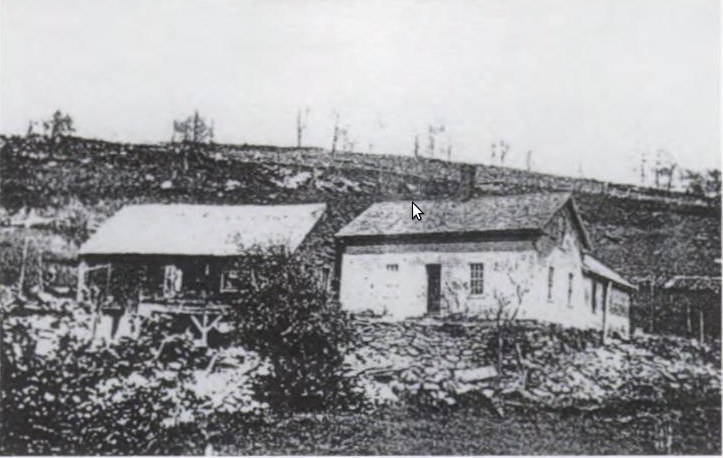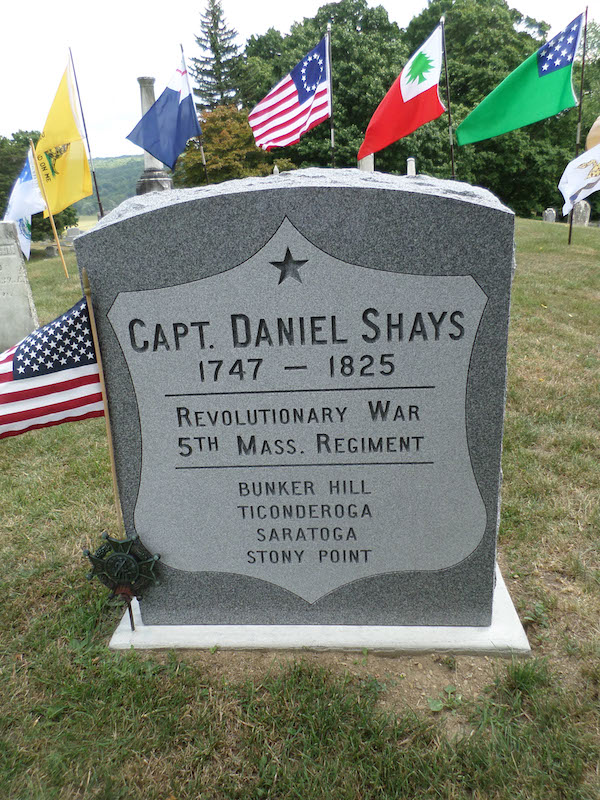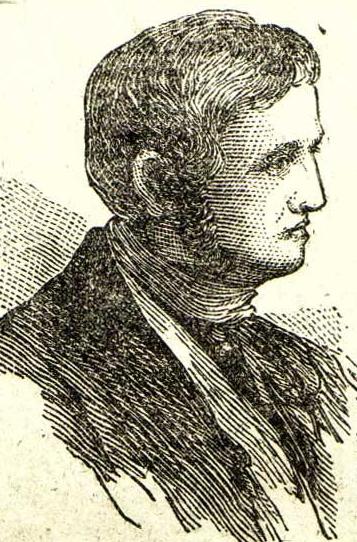Though it was far from successful, Shays’ Rebellion – which spanned several months during the latter part of 1786 and early 1787 – certainly captured everyone’s attention. Some, such as Thomas Jefferson, felt that “a little rebellion now and then is a good thing.” But others, such as George Washington, considered it a serious threat to the stability of a nascent country.
Daniel Shays, for whom the Rebellion is named, was born in 1747 in Hopkinton, Massachusetts. Though multiple sources say that both his parents were Irish immigrants, other sources seem hesitant to say that his mother, Margaret Dempsey, was born in Ireland. And a few sources contend she was actually born in Massachusetts. His father, Patrick Shays, was born in County Kerry, according to Elmer Smail’s 1934 book The Family of Daniel Shays. Other sources do not specify any particular county and just say he came from Ireland.
Scant detail survives as to Daniel Shays’ upbringing. It appears he was one of seven children and that he grew up very poor. Prior to the Revolutionary War, he worked as a farmhand in central Massachusetts. There is a record of him marrying an Abigail Gilbert in July 1772. They proceeded to have as many as ten children.
When the American Revolutionary War erupted, Shays joined the Continental Army, serving as a second lieutenant in a Massachusetts regiment. In 1777, he graduated to the rank of captain. Among other exploits, he fought at the battles of Bunker Hill and Saratoga. He was reportedly wounded at one point, though it does not appear that the wound was severe.
After about five years of service in the Revolutionary War, Shays obtained a discharge in 1780. He then settled in the Massachusetts town of Pelham, where he farmed on his own land and worshiped at the local Presbyterian Church.
Also, his solid military background helped him win election to a series of local offices.

Shays was both liked and respected, though he encountered some disapproval from his fellow veterans when he sold a ceremonial sword presented to him by the Marquis de Lafayette (a French aristocrat and military officer who fought alongside American troops in the Revolutionary War). In fairness to Shays, he was not seeking to disrespect the legendary Frenchman’s gift. Rather, he needed to raise some money to alleviate his personal debts.
At that time, there were many who shared Shays’ financial woes. The upstart United States had indeed beaten a superpower, but it now faced colossal war-related debts. And, for obvious reasons, the British Empire was not keen to include the U.S. as a trading partner.
Debts accumulated at both a federal and state level. Massachusetts, which was in particularly difficult straits, sought to mitigate its financial burden through rigorous taxation. Many felt that such taxes were predatory, and this sentiment was especially acute among Revolutionary veterans – they had been paid with paper currency, which, due to inflation, was now barely worth the paper on which it was printed.
These veterans had shed blood and devoted years of their lives to achieve independence. But, instead of benefiting from such sacrifice, they had to contend with financial exploitation. Many persons, veterans or otherwise, began facing huge personal debts, confiscation of their property, and even imprisonment. In fact, Massachusetts prisons began to have more debtors for inmates than regular criminals.
Residents of western and central Massachusetts were especially dissatisfied, as they felt their voices and best interests were excluded from the decision-making conducted in Boston. Men from the western and central regions would comprise the majority of Shays’ fellow rebels, known as Shaysites.
Debates gave way to protests, which then escalated to riots. As 1786 came to an end, the agitation had reached a tipping point.
On Jan. 25, 1787, Shays and more than 1,000 men attempted to seize the federal armory in Springfield, Massachusetts. Though these “Shaysites” had ample indignation, they were outgunned by the state militia guarding the armory, who used cannon fire on them, resulting in four fatalities.

The aftermath of the Springfield skirmish saw sporadic violent incidents. The Shaysites may have had the moral high-ground, but they did not have the superior weaponry. Shays’ Rebellion essentially met its end in a conflict at Petersham, Massachusetts, on Feb. 4, 1787, when 3,000 soldiers funded largely by Boston businessmen defeated them resoundingly.
In the aftermath of this defeat, Shays fled to the backwoods of Vermont, as Massachusetts authorities began seizing the ringleaders. Those, such as Shays, who had already absconded from the Commonwealth, were tried in absentia. He along with 17 others were sentenced to death. However, only two men (who allegedly committed serious property crimes during the rebellion) were ultimately hanged, as related by the website of the Massachusetts Historical Society.
Shays’ Rebellion was undoubtedly on the minds of the framers of the Constitution of the United States, which was composed later in the same year that the insurrection was quashed. Many persons of influence were concerned that future uprisings in one state could spread to additional states. Therefore, they sought to strengthen the authority of the federal government, thereby enhancing its ability to suppress any ensuing revolts.
The Commonwealth of Massachusetts officially pardoned Shays in 1788, but he never returned. He instead relocated to New York State and lived a quiet life on a small farm. To a large extent, it is surprising that Shays ever became so prominent. He was not one to seek the limelight. And he was also a rather reluctant rebel, according to Alden T. Vaughan’s article on Shays for the June 1966 edition of American Heritage Magazine. This article adds, however, that Shays, “presented a calm moderation that inspired confidence and respect.”
Despite eventually receiving his veteran’s pension, Shays’ later years were ones of poverty, a condition likely made worse by his drinking habit. He died in Sparta, New York, on Sept. 29, 1825, at age 78. His original tombstone was misspelled as “Shay.” This matter was finally rectified – though not until the year 2016, when a distant descendant raised enough money for a new tombstone. Simply adding the missing lowercase “s” was not an option, because the original stone lacked enough space to accommodate any additional letters.

In a way, Shays was lucky that he still had a tombstone at all, for at the time of his death, a number of people considered him a traitor. Such sentiment, however, eventually subsided. It has become clear that he represented the interests of citizens who honestly felt their government had shortchanged them. And while Shays was no Founding Father, the utterance of his name manages to evoke something of the patriot.

Ray Cavanaugh is a freelance scribe from Massachusetts. His mother is from Kerry and his father is a few generations removed from Wexford. He’s a regular “Window on the Past” contributor to Irish America.


Was this experience one that led to getting rid of debtors prison?